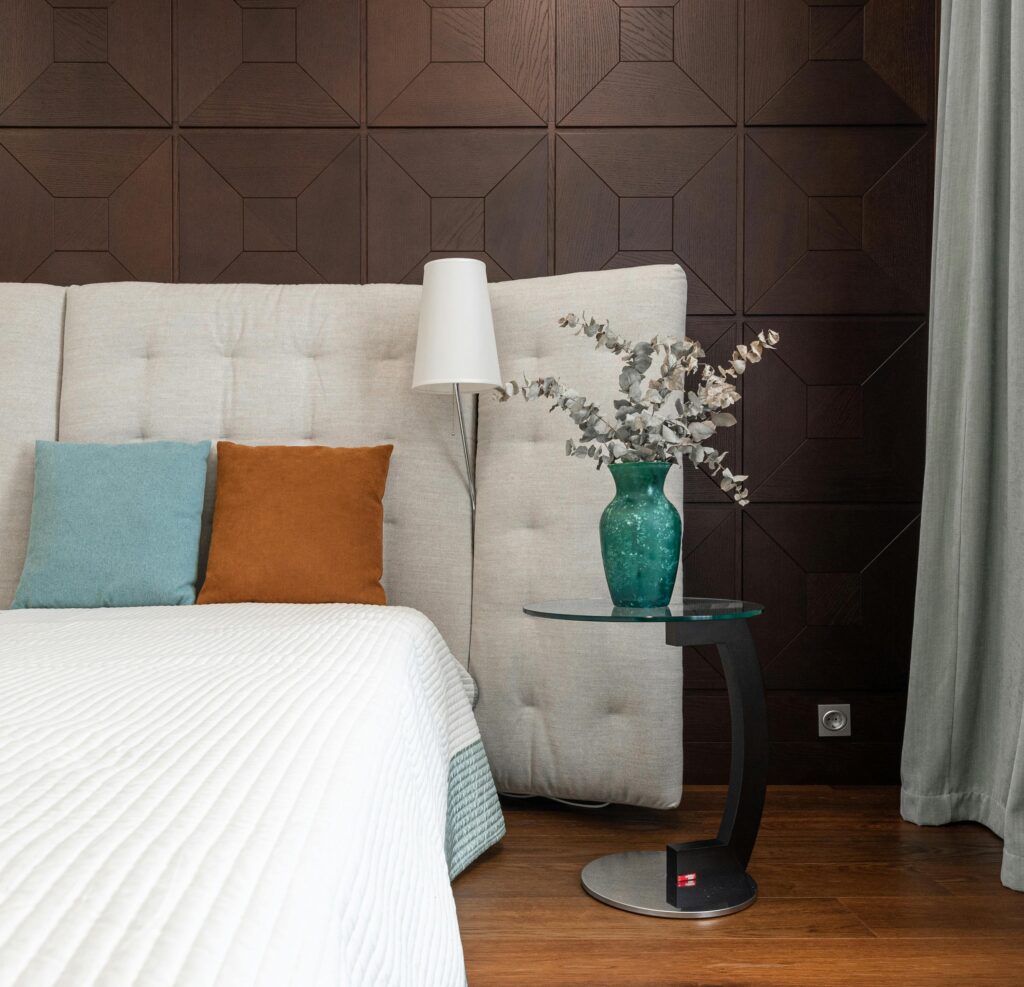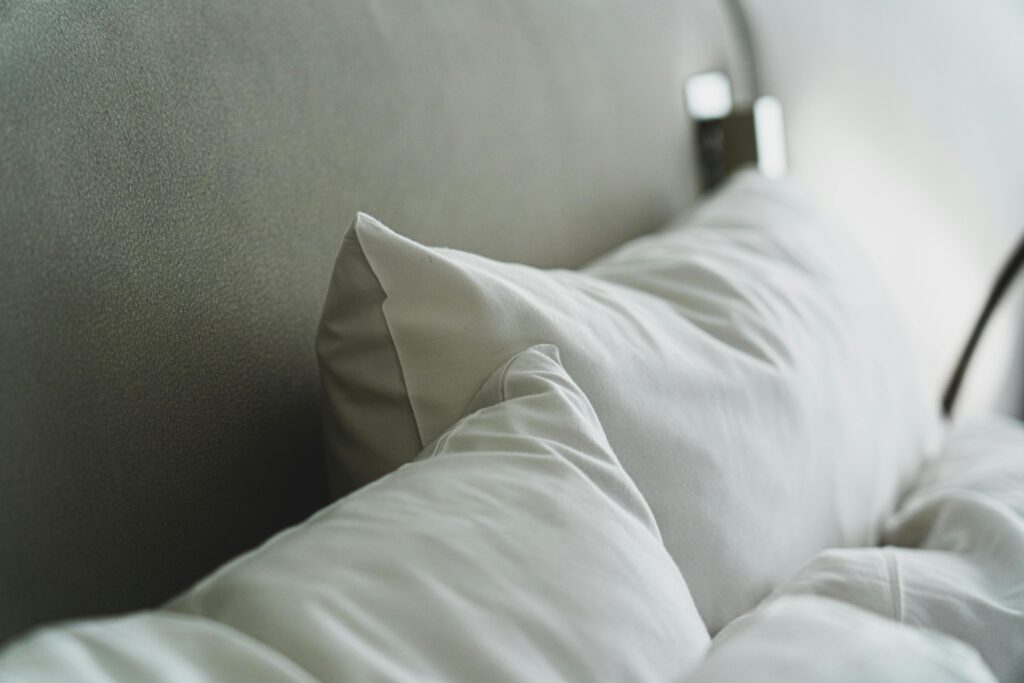Struggling to choose between percale and sateen sheets? Ditch the thread count confusion. Our guide helps you find your perfect weave based on whether you sleep hot or cold, and if you prefer a crisp, cool feel or a silky, warm embrace. Transform your sleep tonight.
Powder Ash – King Size Micro Cotton Bed Sheet Set
The Night I Learned to Feel My Sheets
It was a Tuesday, and my entire world was collapsing over a thread count.
I stood in the middle of a brightly lit linen store, a “400 Thread Count Egyptian Cotton” sheet set clutched in my hand. It was supposed to be a simple, adulting purchase. My old sheets had finally given up the ghost, developing a thin patch that felt like a betrayal after years of service. I thought upgrading was a matter of finding a high number and a pleasing colour. I was wrong.
Dark Jungle Green Poly Cotton – FD Bedsheet Set

An hour in, I was paralyzed. My cart was empty, my phone was burning a low battery warning from frantic Googling, and my mind was a swirling vortex of terms I didn’t understand. Percale. Sateen. Weave. Finish. A kindly, older sales associate named Eleanor must have seen the look of sheer panic on my face—a look she’d probably seen on a thousand faces before mine.
“The number isn’t the story, dear,” she said, her voice calm and knowing. “It’s the weave. It’s the personality of the sheet. Are you a percale person or a sateen person?”
I stared at her, blankly. “I… I’m a tired person?”
She laughed, a warm, genuine sound. “Let’s put the numbers away. Let’s talk about how you want to feel.”
And so, right there in the aisle, between the “Luxury Hotel Collection” and the “Organic Bamboo” displays, my real education began. It wasn’t about marketing; it was about the intimate, nightly story of texture, temperature, and touch. It was the story of percale versus sateen.
Baltic Sea – King Size Micro Cotton Bed Sheet Set
The Loom: Where the Story Begins
Eleanor didn’t start with the sheets. She started with a tapestry.
“Imagine a loom,” she began, her hands weaving an invisible pattern in the air. “You have threads running lengthwise, strong and steady. Those are the warps. Then you have threads running side-to-side, the weavers, the travellers. Those are the wefts. How these two families of threads interact, how they cross over and under each other, determines the entire character of the fabric. This dance is called the weave.”
Pink Flare Poly Cotton – FD Bedsheet Set (Copy)
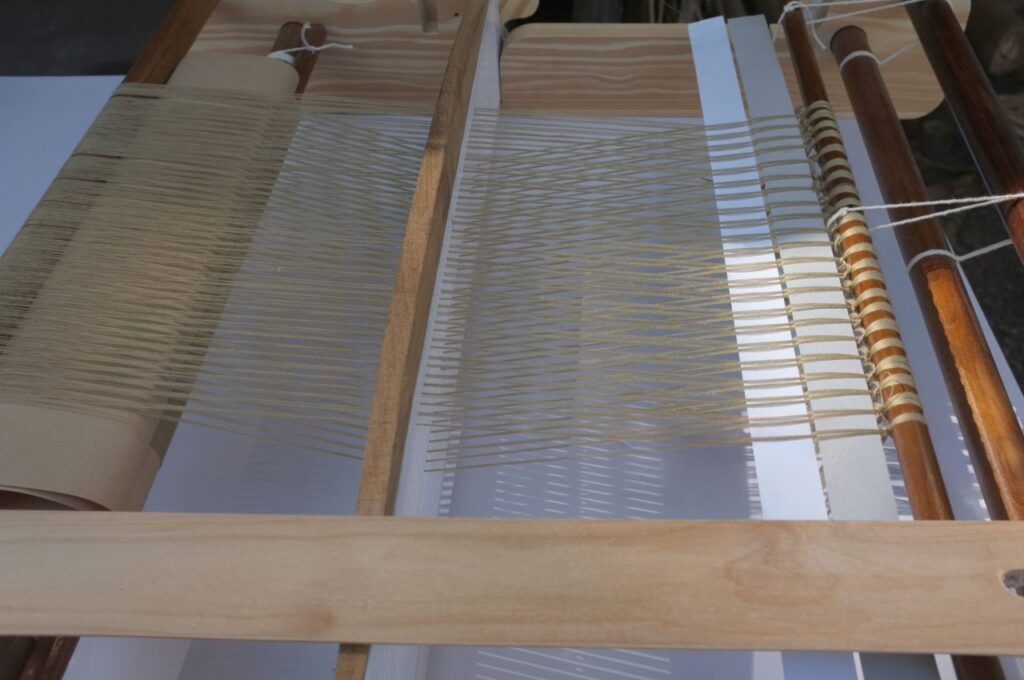
She led me to a small display model of a loom. “Percale and sateen are not different materials. They are different patterns, different dances. They can be performed with the same dancers—the same high-quality, long-staple Egyptian cotton, for instance—but the resulting performance will feel completely different on your skin.”
This was a revelation. I had been judging books by their covers, completely ignoring the plot.
Premium Microfiber Printed Fitted Sheet
Percale: The Crisp, Cool Classic
“Let’s start with percale,” Eleanor said, pulling a set of sheets off a shelf. They were folded into a tight, pristine package. She didn’t let me look at the tag. Instead, she unfolded a corner and had me feel it.
The fabric was cool and smooth to the touch. It had a subtle, matte finish and a distinct, lightweight crispness. It didn’t drape so much as it held its shape. It felt… honest.
Charcoal Grey Poly Cotton – FD Bedsheet Set
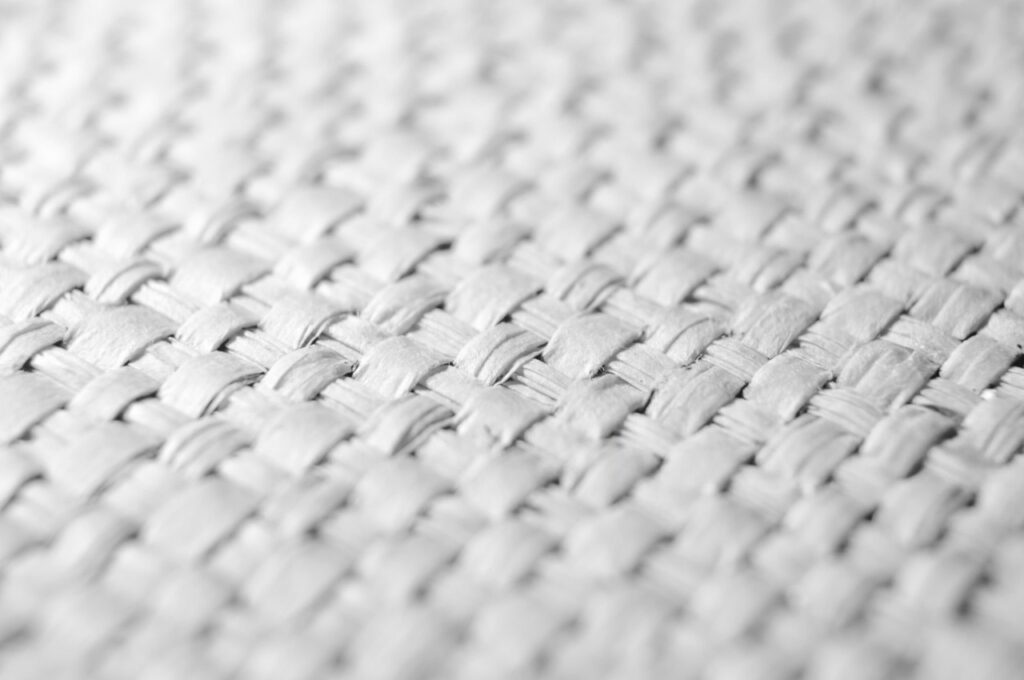
“Percale is the one-over, one-under weave,” she explained. “Like a classic checkerboard or a simple basket weave. Each warp thread goes over one weft thread, then under the next. It’s straightforward, efficient, and creates a fabric that is breathable, lightweight, and incredibly durable.”
I rubbed the fabric between my fingers. It had a certain dry, papery feel. It was the opposite of clingy.
“Who is this for?” I asked.
“The percale person,” Eleanor said, her eyes twinkling, “is someone who sleeps hot. They appreciate a feeling of freshness, of clean, cool air against their skin. They love that ‘just-out-of-the-shower’ feeling when they slip into bed. Percale is the textile equivalent of a crisp, white button-down shirt. It’s timeless, never goes out of style, and it’s effortlessly cool. It’s the sheet of choice for high-end hotels for a reason—it’s consistently refreshing and doesn’t trap body heat.”
She painted a picture of a percale sleeper: someone who might kick off the duvet in the night, who values a sense of order and clarity, who finds comfort in the simple, the classic, the unfussy. Percale, she said, is a morning person’s sheet. It’s invigorating.
“And there’s the sound,” she added. “Listen.” She gave the sheet a gentle shake. It made a soft, rustling sound, like a calm breeze through leaves. “Some people find that sound deeply soothing. It’s the sound of a well-made bed, of a fresh start.”
Premium Microfiber Printed Fitted Sheet
Sateen: The Silky, Sensuous Embrace
Next, she guided me to another set. This one felt different even in its folded state; it was heavier, denser. She unfolded it, and the fabric cascaded over her arm, catching the light. It had a subtle, luminous sheen.
“Now, feel this.”
It was a completely different universe. The fabric was silky, heavy, and luxuriously soft. It had a fluid drape, clinging to her arm where the percale had stood firm. It felt warm to the touch.
“This is sateen,” she announced. “Its dance is more complex. It’s a ‘three-over, one-under’ or sometimes a ‘four-over, one-under’ weave. The warp threads float over multiple weft threads before dipping under one. This creates more threads on the surface, which is what gives sateen its signature smoothness and that beautiful, pearlescent sheen.”
Premium Microfiber Printed Fitted Sheet
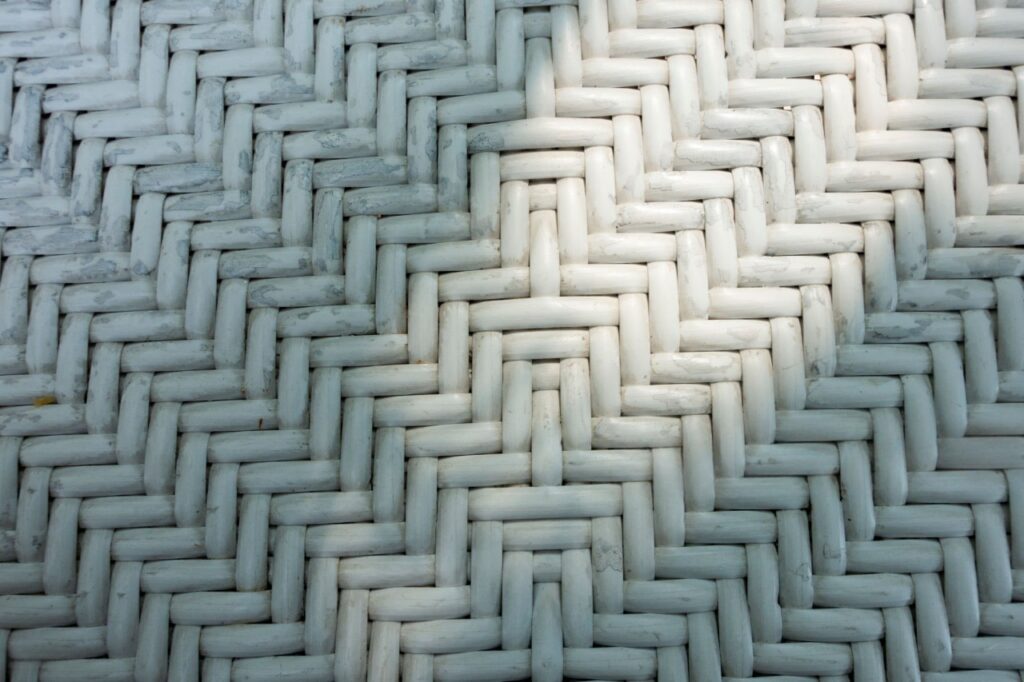
The feeling was undeniably decadent. It was the kind of sheet you see in luxury magazine spreads.
“So, it’s just… fancier?”
“It’s different,” she corrected gently. “The sateen person is a sensualist. They love to be enveloped in warmth and softness. They are the ones who burrow under the covers on a cold night and sigh with contentment. Sateen is the textile equivalent of a heavy, silk dressing gown. It’s about indulgence, warmth, and a deep, hugging comfort.”
She explained that because of the float threads and the typical mercerization process (a treatment that strengthens the cotton and enhances its sheen), sateen has a heavier, denser feel. It’s less breathable than percale, which makes it a better insulator. It’s for the person who is always chasing coziness, who loves the feeling of the sheet conforming to their body.
“The trade-off,” she said, “is that those long float threads, while incredibly soft, can be more prone to pilling or snagging over time compared to the tough, tight weave of percale. It’s a delicate silk robe, not a work shirt. It requires a bit more care, but for its devotee, it’s worth it.”
Huma Linen Fitted Sheet Set – Dark Brown Stripes, Micro Cotton
The Great Misconception: The Tyranny of Thread Count
Armed with this new tactile knowledge, I looked back at my original target—the 400-thread-count sheet.
“So, is 400 good?” I asked, feeling a little foolish.
Eleanor sighed, a sigh of someone battling a decades-old marketing monster. “Thread count is the most misunderstood number in bedding. It simply means the number of threads, both warp and weft, in a square inch of fabric. A higher count can mean a denser, softer fabric, but only if it’s honest.”
She then delivered the bombshell. “Some manufacturers use sneaky, multi-ply threads—twisting two or three thin threads together and counting them as two or three threads. So, a sheet made with cheap, two-ply threads can boast a 600-thread count but be inferior in breathability and feel to a honest 300-thread-count percale made with single-ply, long-staple cotton.”
My head spun. I had been chasing a ghost.
“The real quality,” she insisted, tapping the fabric in my hand, “is in the feel. It’s in the length of the cotton fibers—long-staple cotton like Egyptian or Pima is best, as it creates stronger, smoother yarns with less pilling. It’s in the weave you prefer. A 200-thread-count percale made with fantastic cotton will feel and last better than a 1000-thread-count sheet made with garbage.”
The number was a distraction. The truth was in my fingertips.
Premium Microfiber Printed Fitted Sheet
The Personality Test: Which One Are You?
Eleanor saw me looking back and forth between the crisp percale and the silky sateen.
“It’s not always an easy choice,” she said. “It’s about your personal sleep climate and your sensory preferences. Let me ask you a few questions.”
“Do you tend to sleep hot or cold?”
- Hot -> Percale. Cold -> Sateen.
“When you get into bed, do you want to feel refreshed and cool, or enveloped and warm?”
- Refreshed -> Percale. Enveloped -> Sateen.
“Do you prefer the matte, minimalist look of a high-quality t-shirt, or the slight sheen of a silk blouse?”
- Matte -> Percale. Sheen -> Sateen.
“Are you looking for hard-wearing durability that gets softer with every wash, or for immediate, opulent softness?”
- Durability -> Percale. Opulence -> Sateen.
For me, the answers were clear. I am a furnace at night. I love the feeling of crisp, cool linen. I hate feeling trapped or sticky. The rustle of percale sounded like the promise of a deep, cool sleep. The sateen, while beautiful, felt like it would be too warm, too heavy for my personal internal thermostat.
I was a percale person.
The relief was immediate and profound. The confusion of the last hour melted away, replaced by a clear, confident direction.
Luxury Bed Spread 3 Pcs
Beyond the Binary: A World of Textiles
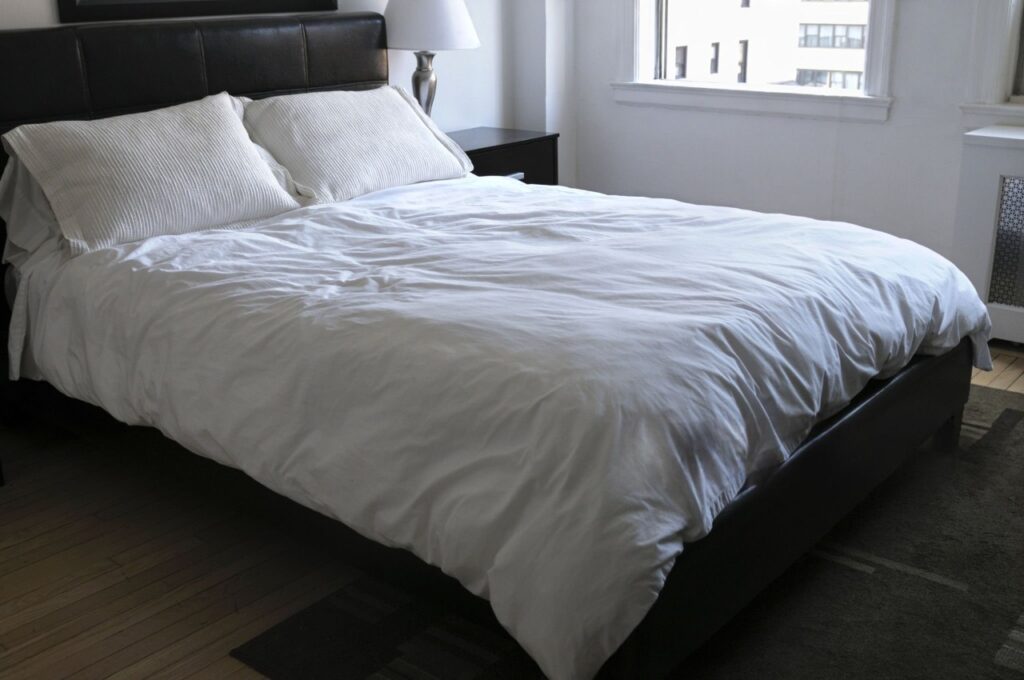
Before I rushed off with my choice, Eleanor gave me one last piece of wisdom. “Percale and sateen are the classics, the pillars. But the world of bedding is vast. Linen, for instance, is the ultimate in breathable, casual crumple. It’s fantastic for hot sleepers, but it has a very different, more textured feel. Flannel is for deep winter coziness. Bamboo and Tencel are modern wonders, incredibly soft and temperature-regulating, often woven in a sateen weave for that silky feel but with better moisture-wicking properties.”
She wasn’t trying to confuse me again; she was opening a door. “
Huma Linen Fitted Sheet Set – Red Stripes, Micro Cotton
FAQs
1. I sleep hot, but I love the soft, silky feel of sateen. Is there a way to get the best of both worlds?
Absolutely! This is a common dilemma. Look for sateen sheets made from alternative materials like Tencel™ Lyocell or Bamboo Viscose. These fibers are naturally more breathable and have excellent moisture-wicking properties, which help regulate temperature. When woven in a sateen pattern, they offer that desired silky-soft handfeel but are much cooler against the skin than traditional cotton sateen. It’s a fantastic compromise for the hot sleeper who craves luxury.
2. Which weave is more durable and long-lasting, percale or sateen?
Generally, percale has the edge in terms of durability. Its tight, one-over-one-under weave creates a strong, resilient fabric that can withstand frequent washing and tends to become softer and more comfortable over many years without pilling. Sateen’s long float threads, while incredibly soft, are more susceptible to snagging and can be prone to pilling over time, especially with lower-quality cotton. For a set of sheets you want to last a decade or more, high-quality percale is often the more robust choice.
3. Can you tell if a sheet is percale or sateen just by looking at it?
Often, yes. Percale typically has a matte or crisp, cottony finish, similar to a classic men’s dress shirt. It doesn’t reflect much light. Sateen, due to its weave and the common mercerization process, has a subtle, luminous sheen. When draped, it looks fluid and silky, while percale holds a more structured shape. The easiest way to confirm, however, is to feel it. Percale feels cool and crisp; sateen feels warm, heavy, and slickly soft.

